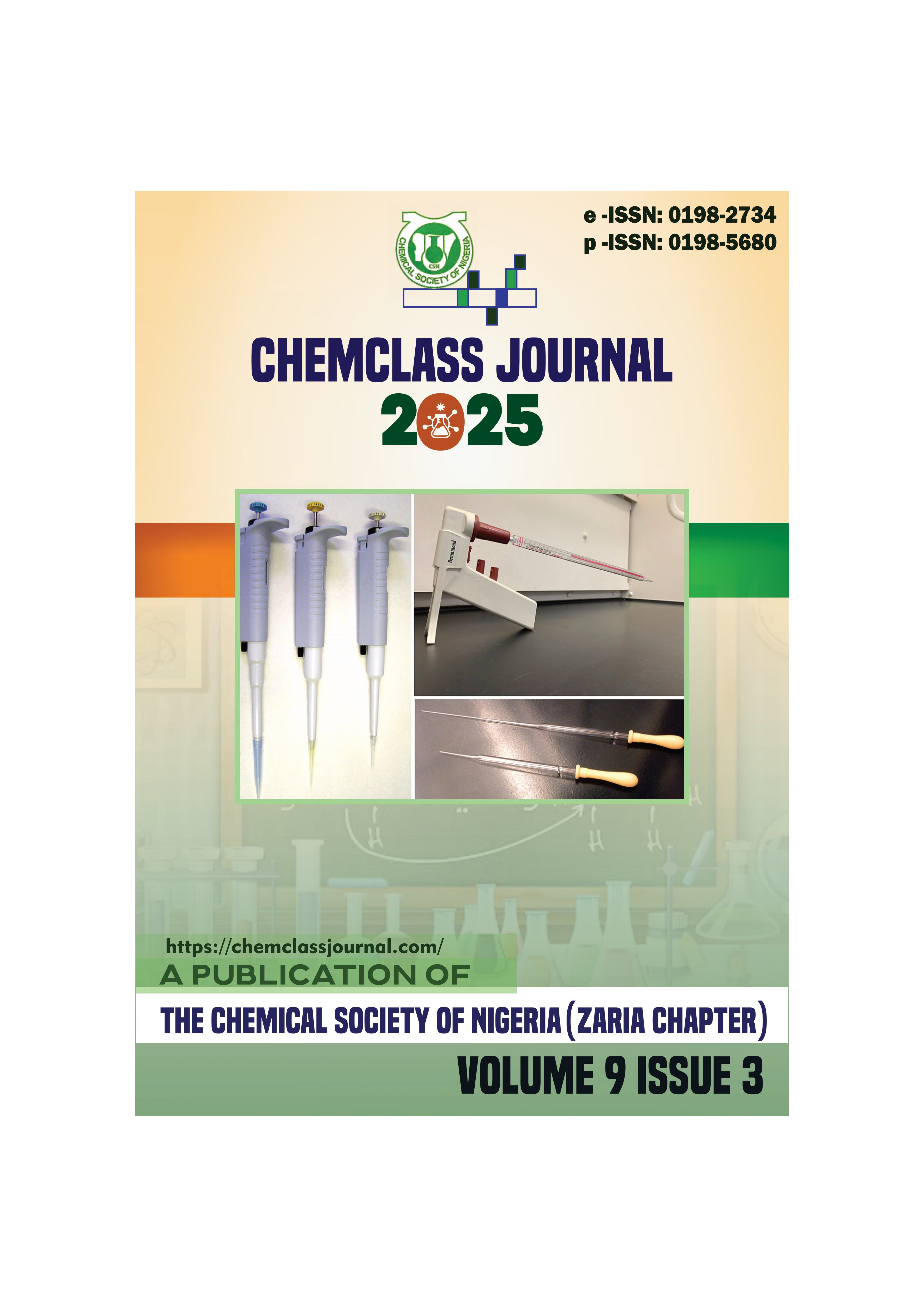Effects of Chemical Inhibitors on Partially Purified Chromate (VI) Reductase Activity in Trebouxia erici
DOI:
https://doi.org/10.33003/chemclass-2025-0903/17Keywords:
Bioremediation, enzyme inhibition, EDTA, Heavy metals, Trebouxia erici, Chromate (VI) reductaseAbstract
Hexavalent chromium [Cr(VI)] is a widespread industrial pollutant that poses severe environmental and health risks due to its high solubility, mobility, and carcinogenicity. Bioreduction of Cr(VI) to the less toxic and more stable trivalent form [Cr(III)] offers a sustainable alternative to physicochemical detoxification methods. The green alga Trebouxia erici, a lichen photobiont frequently inhabiting metal-stressed environments, has emerged as a promising candidate for biological chromium reduction. In this study, chromate (VI) reductase activity from T. erici was partially purified using ammonium sulphate precipitation and dialysis, and its sensitivity to chemical inhibitors was examined. Enzyme activity was assayed spectrophotometrically by monitoring NADH oxidation at 340 nm in the presence of respiratory inhibitors, thiol-blocking agents, chelators, and metal ions. The enzyme exhibited NADH-dependent Cr(VI) reduction with measurable baseline activity. Sodium azide and potassium cyanide strongly inhibited activity (<50% residual), while mercury ions nearly abolished it (<90% residual). Iodoacetate caused moderate inhibition (~65% residual), indicating involvement of thiol groups. EDTA produced concentration-dependent inhibition, reducing activity to ~40% at 5 mM, suggesting a requirement for divalent metal cofactors or metal-associated electron transfer. However, Mg²⁺ and Ca²⁺ had negligible effects, implying tolerance to non-disruptive cations. Collectively, these results indicate that T. erici chromate (VI) reductase depends on redox-active cofactors and is highly susceptible to heavy metals and chelating agents, yet retains activity under less competitive ionic conditions. The enzyme’s inhibition profile highlights both its promise as a biocatalyst for Cr(VI) detoxification and its limitations in chemically complex environments. Further studies on cofactor interactions, structural stabilization, and kinetic optimization are warranted to enhance its bioremediation potential.





 ChemClass Journal
ChemClass Journal
